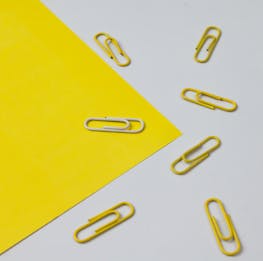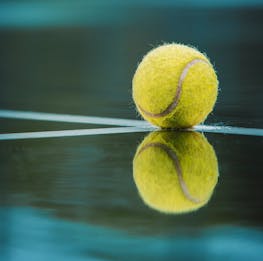What are you going to achieve in life? This is one of the big questions posed in Bounce.
Bounce asks whether we believe talent can be nurtured, or if it's something inherent. How we respond to this question is pivotal, because it determines how we live. By delving into some exceptional case studies and biographical profiles, we're shown that with enough effort, we'll improve, and what's more, we might achieve mastery.
Matthew Syed is a former champion table tennis player, journalist, broadcaster, and author. His sports background paved the way for this insightful and compelling look, into an age-old argument on innate talent vs. hard work and practice.
Syed gives a comprehensive look into the 10 thousand hour rule genre, which argues that excellence is a product of practice over talent. We'll briefly look at science and research behind talent and high performance, as well as some of the trivialities that could give us the edge.
Child Prodigies
We've all seen them, YouTube videos of young children playing Bach on the piano, furiously strumming Tárrega on the guitar, or solving unbelievably complex math equations. When faced with these examples, many of us shrug and file these children away under the category "prodigy."
If we look at the example of Mozart, he could play the harpsichord by the age of four, and he could compose simple music at the age of five. Mozart showed incredible dexterity and aptitude, but he was also recognized as having an astonishing memory. When people hear about young Mozart's accomplishments, usually the first reaction is to remark on his extraordinary talent, innate genius, or even god-given favor. However, if we examine his story in a bit more detail, we'll see there's more to his talent than meets the eye.
Studies on child prodigies reveal that practice is at the heart of their success. Often prodigies are wheeled out to us on stages around the world, on shows like Oprah, or via YouTube. We might remember a young Tiger Woods in 1978, who appeared on The Mike Douglas Show and revealed phenomenal golfing skills for such a young child. What we don't see is the behind-the-scenes practice. By the time he was five, Tiger Woods had practiced more than most golfers practice in their lifetimes.
Did you know that by the time Mozart was six, he had practiced and trained for 3500 hours? It's little wonder that he was so accomplished, but when you compare him to other pianists who'd undergone the same number of hours, he was in a similar league. Syed argues that it really does come down to practice, and that if we put in the hours, and the right kind of rigorous practice, we too can accomplish great things.
The 10 Thousand Hour Rule
There are many examples of the 10 thousand hour rule. Take chess for example. Most chess masters and grandmasters show an obsession with the game, making them put in hours and hours of training and practice. In fact, most chess masters take about a decade, or 10 thousand to 50 thousand hours to compete at the highest level. There are no shortcuts, and there are no examples of anyone who has leapfrogged these hours needed to become a grandmaster.
Syed takes it a step further and talks about one million repetitions. When Andre Agassi was a child, his father told him about the logic of math. Andre Agassi was told by his father, that if he hit 25 hundred shots per day, he'd hit nearly a million balls per year. Furthermore, his father said that anyone who practiced with this amount of discipline, would be unbeatable. You can't argue with the numbers; that number of repetitions provides a startling advantage. Repetition has a lousy reputation, but according to Syed, it's the only way we develop and hone skill and muscle memory.
A Study on Prodigies and Practice
László Polgár, a Hungarian, was one of the first people to question talent and intelligence. He noticed that geniuses all exhibit the same pattern of honing their craft from a very young age. When he became a father, he wanted to prove his theory that any child has the potential to be gifted with the right parenting. In fact, Polgár stated unequivocally that 'A genius is not born but is educated and trained. When a child is born healthy, it is a potential genius.'
His wife Klara was on board with the experiment, so they agreed to raise their children as chess prodigies. Chess was a logical choice because it's straightforward to rank, making the experiment easy to monitor. The couple had three daughters who were schooled in chess from an early age. They began just before their third birthday, and were homeschooled by their parents. Susan, the eldest, began beating accomplished players by the age of six. Judit, the youngest, beat László by the age of five. The middle daughter, Sofia, was the least successful player of the sisters, yet astonishingly she was the 6th best woman player in the world. Judit became the best woman player in the world, and the highest-ranking woman for nearly twenty years. Susan was hot on her heels as the second-best woman player in the world. Both Susan and Judit reached grandmaster status, Judit, before the age of 16.
When his eldest daughter first beat high-level players, everyone remarked on her natural talent. Again this shows how we often see success as the tip of an iceberg, ignoring all the hard work and practice.
How To Practice
Desmond Douglas is the most successful post-War British table tennis champion. He began playing while at school in Birmingham, and would practice during dinner, or when it rained. Eventually, it became an obsession. The style of play that Douglas adopted was a product of his environment. There was little money for anything fancy, so he and his schoolmates played in classrooms, on a table tennis top that they rested on school desks. The limited space meant that he had to adapt how he moved around the table, and this close style became part of his game. Douglas posits that being a good player comes down to attitude and work rate.
What's interesting about Desmond Douglas, is despite having lightning-fast reactions playing table tennis, when scientists ran independent reaction tests, he had the slowest times of all the English team players. The scientists were bemused.
Desmond Douglas had the edge because of how he practiced, and how this type of practice developed his brain. When we engage in what's known as intensive, deep, or deliberate practice, our brains are primed to "read" situations more carefully. The more experience we have, the better our brains adapt to reacting to our environment. Hence, through his hours and hours of practice, Douglas learned to read his environment, and how the ball would react. Therefore he was able to read what the ball was going to do, and respond accordingly. Secondly, when we engage in intensive practice, and become more expert, our brain changes. Whereas a novice relies on the brain's prefrontal cortex, an expert can perform without conscious control. Specific movements become second nature, which allows the brain to concentrate on other areas that may need attention. When so much of the body is automated, it enables the brain to consider tactics, the opponent, and so forth.
Failure Is an Option
In The Talent Code, Daniel Coyle argues that failure is a significant factor in the learning process. In fact, he says, 'Struggle isn't an option; it's a biological requirement.'
When it comes to practice, many of us do it wrong. How often do you stick to a routine and do what feels comfortable and easy? We may run the same route, lift the same weights at the gym, attend the same spinning class, play the same piece of music, or read the same types of books because we're familiar with the author. While there's nothing wrong with familiarity and comfort, we need to stretch ourselves when it comes to practice.
We often get into a fixed mindset where we reach a level that's "good enough." If we look at music as an example, we usually begin coasting once we learn a song and can play it proficiently. We might delight our music teacher at that moment, and we may believe we've achieved our goal, but the lesson isn't to stop here; move onto a more complex song and keep practicing. If we stick to the songs we're good at playing, we remain in our comfort zone, and will never improve. Improvement comes from failure, but we've been led to believe that failure shows weakness.
When practicing, we need to increase the difficulty level by manageable increments. If there's no sign of failure, then we're not stretching ourselves hard enough. To be at the top of our game, we need to keep pushing ourselves to establish new goals. Learning and improvement come from trying, failing, making adjustments, and learning throughout the process. Doing this allows the brain to develop, acquire new skills, and to be able to deal with difficulties and failures. To become a true master, we all need to realize that those who say "failure isn't an option" are wrong. Failure is the option, and it's the only way we'll grow and acquire new skills.
Adopting the Right Attitude
We're often told that we need the "right" attitude, but what exactly is this? Syed argues that we often fall short by straddling between complacency and arrogance.
Have you ever described someone as a natural? When we see people becoming a top 10 athlete, or a maths whizz, we often assume they're naturally gifted. On the other hand, we may declare that it's because they spend all of their time practicing.
The problem with the fixed mindset around natural ability and talent, is that we often use it as an excuse not to reach our goals. We might say, 'Why bother if I'm no good at it?' However, if we have been "blessed" with "good genetics" or "natural ability," we may decide that we don't need to practice because we can rely on our ability.
Syed argues that we need to adopt the attitude of praising commitment and perseverance, rather than defining skill as a natural talent. Studies show that children who are encouraged and told that their persistence will pay off, are more likely to solve complex puzzles and problems.
There's also a winning mindset that we need to adopt. If we don't think that we have a chance of winning, it's quite simple; we won't win. Doubt makes us nervous, which causes a chain reaction in our mindset and muscles.
Have you ever drawn a blank during a presentation? When this happens, it's usually not because of a lack of practice or aptitude. Drawing a blank or fumbling usually happens because we work ourselves up with nerves and doubt. We know that the mind is incredibly powerful because of factors like the "Placebo Effect." So, if you don't believe you can accomplish something, your body will jump to agreement.
Crumbling Under Pressure
Have you ever put on a nice clean white shirt, only to spill something on it almost immediately? Have you noticed how when you're wearing a dark-colored shirt, this seldom happens? Why is this?
The brain is made up of the implicit and explicit systems. The explicit system is activated when we're consciously trying to control and focus on what we're doing. It works slowly and deliberately, and we use it when we're performing tasks for the first time. The implicit system kicks in once we've mastered a task. Certain tasks are natural to us, and because we've practiced and performed them so often, they're automatic. When we're under pressure, our explicit system is activated, and we become very self-aware and self-conscious. The pressure to perform makes things that are usually second nature, increasingly difficult.
You may have seen this when a golfer is trying to sink a winning putt. Despite having practiced for hours and hours, they may completely crumble under the pressure, and it'll look like they've never hit a ball before. Choking happens in all contexts, and it's a sign of significant pressure. Psychologists are trained to help individuals and teams deal with this, and many suggest reframing competitions, downplaying importance, or changing focus.
A way to change thinking is through double thinking. Double thinking is the idea that we can hold two contradictory beliefs in our heads and switch between them. For example, often Nick Faldo would analyze each putt in detail; after doing that he would abandon all of the analysis and just let his instinct kick in. Sometimes you need to know when to go with instinct, and when to go with analytical thinking.
Trivial Pursuits
You may remember the story of Se-ri Pak from The Talent Code. Se-ri Pak put South Korea on the map when she won her first major tournament in 1998. Her wins inspired the country, and the number of South Korean golfers on the LPGA tour skyrocketed.
Humans are strange animals, and often it takes trivialities to ignite passion within us. "Motivation by Association" is a phenomenon where people identify with similarities, which increases our sense of self-belief. In the case of South Korea, just knowing that a South Korean woman could play an incredible game of golf, led South Koreans to believe that they could too. We have also seen this with The Bannister Effect.
In a study on unsolvable math problems, undergraduates showed how influential "Motivation by Association" can be. Students were given reports read by talented math graduates. However, there was a catch. Some of the reports were doctored to reflect a shared birthday with the person reading it. So, some students were led to believe that the report was written by someone who shared a birthday with them. The results revealed that the students who were given reports with individuals sharing the same birthday, persevered for 65% longer. This trivial shared similarity shows how powerful motivation by association can be.
In Conclusion
We often talk about "God-given talent," "fate," "divine inspiration," and so on. This mindset is problematic because it takes away our agency and ownership of our abilities. If we believe that talent is something bestowed upon us, it's a double-edged sword. Either we coast and rely on our capabilities, or we sit back and don't seek to improve because we believe it to be futile.
Matthew Syed argues that it's never too late to improve, and by showing us a range of case studies and examples, he sets out to prove that all of us have the potential to better ourselves. Furthermore, adopting the mindset that effort and determination improve overall performance, instills values that drive purpose, meaning, and value. After all, when we believe in possibility, it opens up doors and allows us to push the boundaries of what we thought possible.
Bounce is an inspiring read, that asks us all to make a choice between either catching the ball and pursuing excellence, or sitting and waiting for life to bounce past us.




